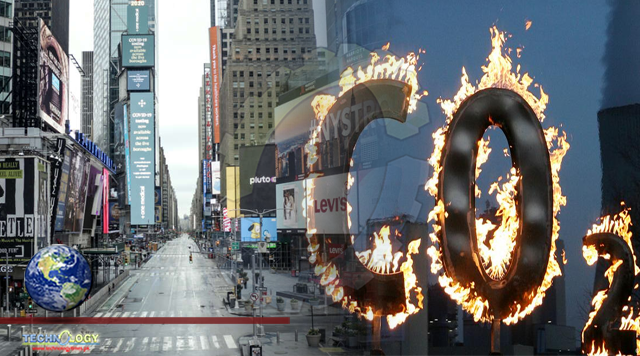Greenhouse gas concentrations in Earth’s atmosphere soared to record new heights in 2019 and continued to rise again this year, despite an expected drop in emissions due to the worldwide Covid-19 lockdowns.

The World Meteorological Organization (WHO) released their annual Greenhouse Gas Bulletin on Monday, revealing that the carbon dioxide (CO2) concentrations in Earth’s atmosphere saw another growth spurt in 2019, breaking the global threshold of 410 parts per million (ppm), up from 407.9 parts ppm in 2018. The trend is undeniably being driven by human activity, namely the burning of fossil fuels, industrial activity, and deforestation.
However, the release of greenhouse gas and its effect on atmospheric concentrations is fiddly and very much a long-term issue. It’s forecasted that 2020 will still see concentrations of carbon dioxide continue to rise at a global scale, albeit at a slightly slower pace than the previous past couple of years.
In other words, although Covid-19 had a short-term impact of greenhouse gas emissions, the reduction is not out of the realm of normal variability and the planet is still pumping out carbon dioxide at a relentless rate.
“The lockdown-related fall in emissions is just a tiny blip on the long-term graph. We need a sustained flattening of the curve,” Professor Petteri Taalas, Secretary-General of the WMO, said in a statement.
Carbon dioxide contributes to the majority of global warming caused by greenhouse gas in the atmosphere pumped out by burning fossil fuels and other human activities, remaining in the atmosphere for centuries. In other recordings this year, the Mauna Loa Observatory in Hawai’i recorded the highest monthly reading of atmospheric CO2 ever recorded back in May, documenting a seasonal spike in the atmospheric CO2 of 417.1 ppm.
“The last time the Earth experienced a comparable concentration of CO2 was 3 to 5 million years ago, when the temperature was 2 to 3°C warmer and sea level was 10 to 20 meters higher than now. But there weren’t 7.7 billion inhabitants,” explained Professor Taalas.
“Such a rate of increase has never been seen in the history of our records,” he added.
Last year also saw a higher than average rise in methane, an especially potent heat-trapping greenhouse gas that remains in the atmosphere for less than a decade. Nitrous oxide, a greenhouse gas and an ozone-depleting chemical, was also on the up, seeing an increase that was equal to the average growth rate over the past 10 years.
This all sounds fairly disheartening, but some scientists are remaining optimistic about change on the horizon. While Covid-19 certainly won’t cure the planet’s climate crisis, many are hoping it could act as a springboard for policymakers to push forward more climate action.
“The COVID-19 lockdowns is not a solution for climate change. However, it does provide us with a platform for more sustained and ambitious climate action to reduce emissions to net zero through a complete transformation of our industrial, energy and transport systems.
The needed changes are economically affordable and technically possible and would affect our everyday life only marginally. It is to be welcomed that a growing number of countries and companies have committed themselves to carbon neutrality,” explained Taalas.
Originally published at IFL Science
